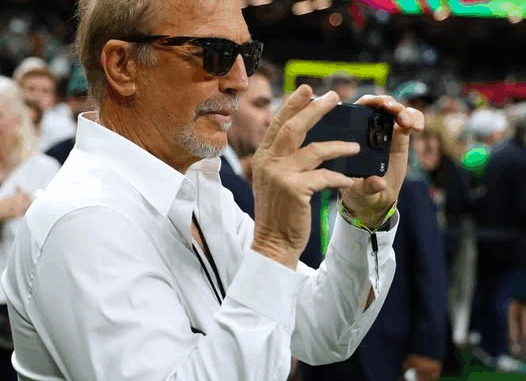
Kevin Costner’s journey behind the camera began the moment he realized that being a star wasn’t enough—he had more to say. This article delves into his bold steps as a filmmaker, from Dances with Wolves to Horizon: An American Saga, exploring his creative risks, visionary ambition, and unwavering dedication despite setbacks.
1. Taking the Director’s Chair
After the success of Bull Durham and Field of Dreams, Costner wasn’t content to simply act—he wanted to shape stories himself. In 1990, he took the reins as director, co-writer, producer, and star of Dances with Wolves, a risky creative gamble that would define his legacy behind the camera.
2. Dances with Wolves (1990): A Monumental Gamble
-
Concept: A Civil War soldier befriends the Lakota Sioux—a story of cultural exchange and humanism.
-
Production Challenges: Costner fought for creative control, filmed on location, and directed in Lakota language.
-
Results: Grossed over $400 million worldwide. Earned 7 Oscars, including Best Picture and Best Director for Costner—an extraordinary feat for a first-time director.
This film marked Costner not just as a star, but as a visionary auteur cloaked in a Western epic.
3. Attempting Big: The Postman and Waterworld
-
Waterworld (1995): The most expensive film of its time. Though divisive, it showed Costner’s desire to push cinematic boundaries.
-
The Postman (1997): Costner directed and starred in this post-apocalyptic Western based on David Brin’s novel. Though critically panned and commercially disappointing, the film exemplified Costner’s determination and creative passion.
Despite the backlash, Costner stood by his artistic vision, even harshly criticizing the studio responsible for the disappointed response to Postman.
4. Revival: Open Range (2003) and Western Renaissance
-
Open Range signaled Costner’s resurgence: a classic yet gritty Western that balanced action with humanitarian themes.
-
Considered underappreciated at the box office, the film earned critical respect and solidified Costner’s position as a modern Western director—reaffirming his love for the genre.
5. Horizon: An American Epic in the Making
-
Horizon: An American Saga is Costner’s ambitious multi-part Western epic, shot in his personal “Yellowstone of the Midwest” ranch in Kansas.
-
Self-funded and uncompromising, the project exemplifies Costner’s decades-long obsession and commitment—though long-delayed, its scope and passion reflect his dedication to the genre.
6. Directing Style & Creative Philosophy
Costner’s filmmaking is defined by:
-
Emotional sincerity grounded in character relationships.
-
Grand landscapes to emphasize human struggle and triumph.
-
A featured role in all key production stages—writing, directing, producing, and starring.
He believes in patience over spectacle, allowing stories to breathe and audiences to feel with the characters.
7. Risk, Reward, and Resilience
Even with his ups and downs, Costner remains fearless in storytelling.
-
His directorial debut won top honors; his mid-career misfires didn’t silence him.
-
He returned strong with Open Range and continues to pursue Horizon despite industry shifts.
-
His resilience proves that true vision doesn’t bend to box office numbers alone.
FAQs
Q1: Which films has Costner directed?
A: Dances with Wolves (1990), The Postman (1997), Open Range (2003), and currently Horizon: An American Saga (multi-part).
Q2: Did he win Oscars for directing?
A: Yes—Best Picture and Best Director for Dances with Wolves.
Q3: Which directed film was a critical failure?
A: The Postman received negative reviews and box office disappointment, though Costner has defended its vision.
Q4: What’s Horizon about?
A: His most personal Western epic—multi-part, historical-west theme, filmed on his Kansas ranch.
Q5: Anywhere he filmed on his land?
A: Yes. Horizon is being filmed on his own property, aiming for authenticity and immersion.
